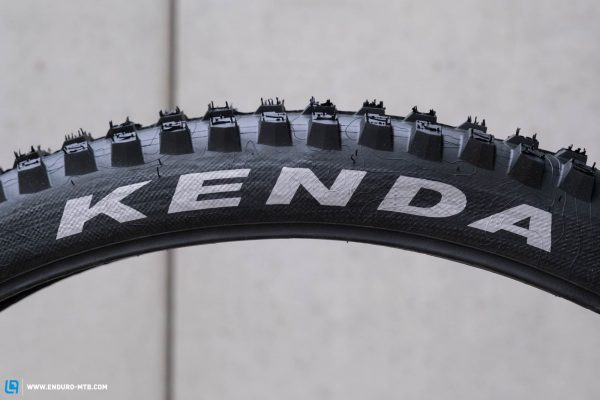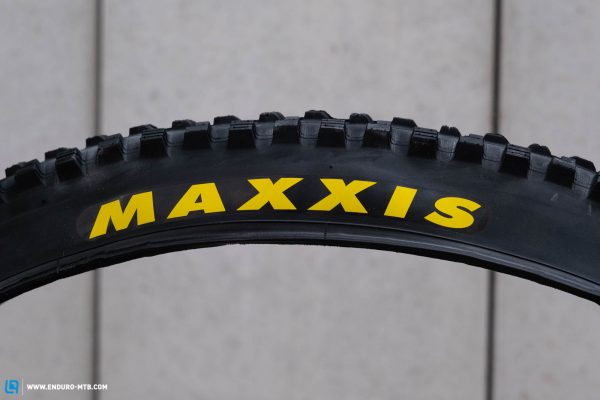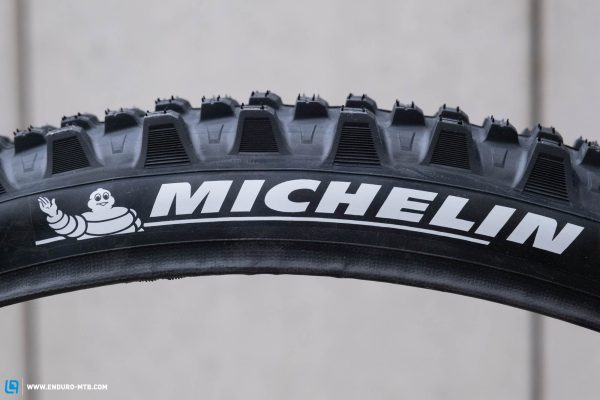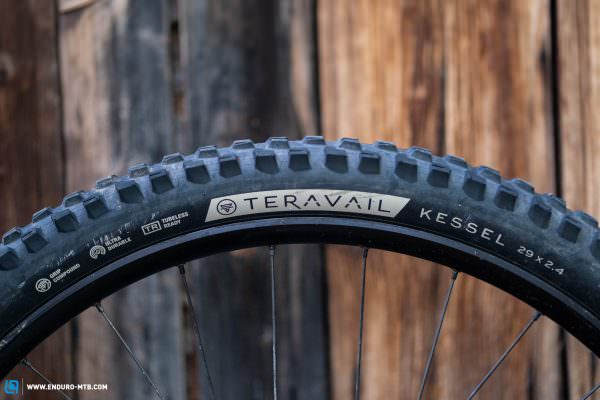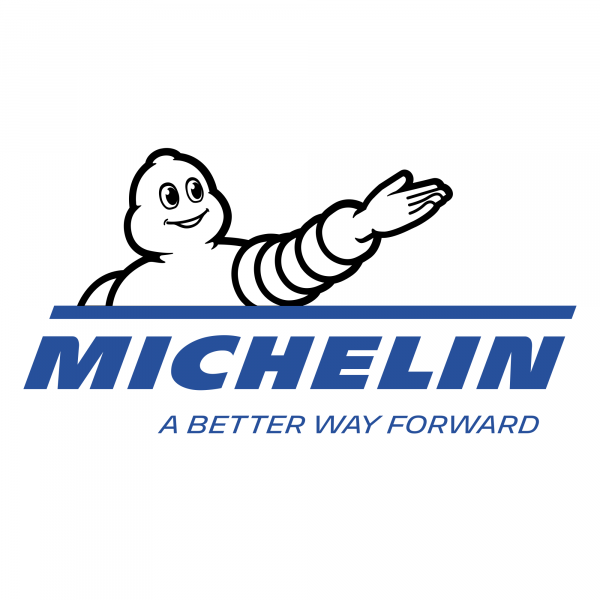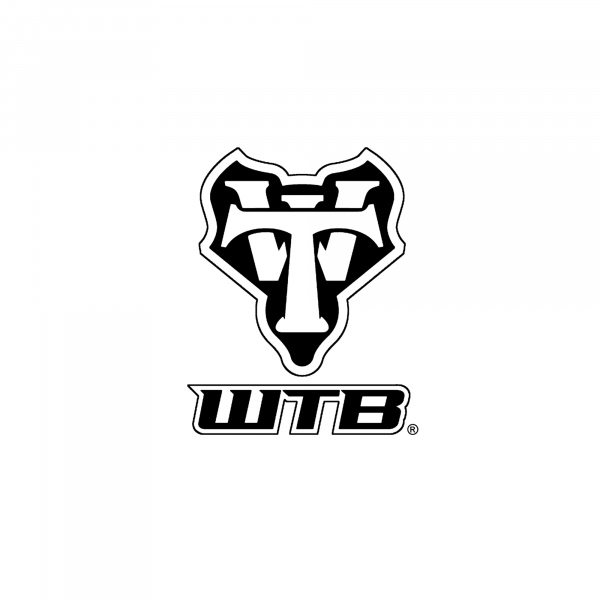The Best Mountain Bike Tire – We had them all!
Schwalbe, MAXXIS, Continental, Michelin, WTB, Kenda… The range of mountain bike tires on offer is huge and sometimes confusing. We tested more than 50 tires and although we couldn’t agree on a clear favourite, we can tell you how to find the perfect tire to suit you and your bike.
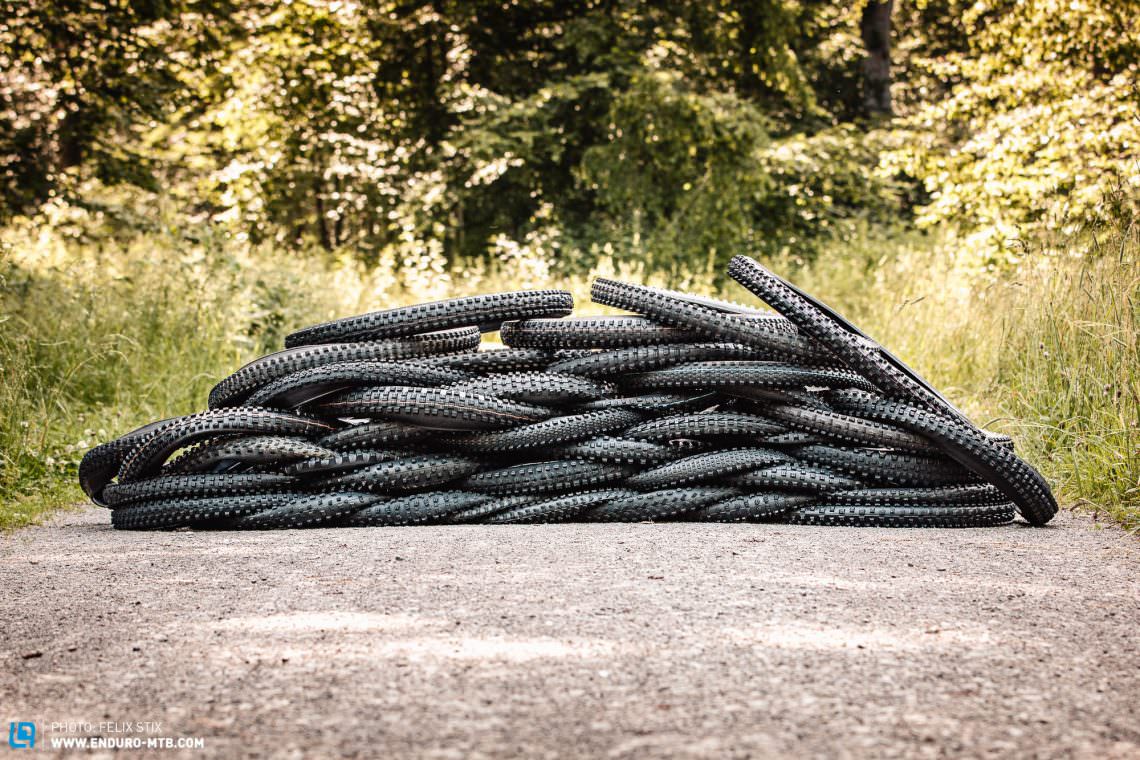
Table of content
- What you need to know about tires
- Front tires ≠ rear tires
- Yes, tires are expensive!
- The most important factors in tire selection
- How to choose the right tire
- Tire burping
- Which tires do we run?
One caveat before we start: this ENDURO group test has no Best in Test, nor have we selected a Best Value Tip either. When it comes to tires, there are countless factors to take into account that influence its performance, which is why tire manufacturers offer a variety of models for different types of riders, trail conditions and skill levels. Someone whose Enduro bike only gets ferried to the top of a mountain on the trailer of a shuttle has very different requirements to an alpine adventurer who has to earn every descent. Even if we could have agreed on “one” tire, it would still only be the best possible compromise for all-round use. You see, there is no one ideal tire to suit every biker! Instead, we’ll tell you about our personal favourites and explain how to find the right tire for you.
In order to keep things as simple as possible, we divided the group test into a total of three parts. The first part covers the fundamentals you’ll need to know about tires. In the second part, we will show you the four most important factors to consider when choosing new tires. And in the last part we tell you how to find the right tire for you. Once we’ve covered the basics, we’ll give you an overview of all the well-known brands. We tested every tread pattern, rubber compound and casing.
All the models in test
Part I – Theory: what you need to know about tires
If you’re still running tubes, you’re on your own
The advantages of tubeless are obvious: less weight, more grip, lower rolling resistance and improved puncture resistance. Although setting them up can be a bit tedious (though modern rims and tyres usually make the process painless nowadays), almost all modern Enduro tires and rims are tubeless ready. In case you’re still running tubes, we have detailed instructions on how to fit tubeless tires and we urgently recommend that you finally convert. We only ride tubeless and that’s how we reviewed all the tires here.
Never heard of tubeless? In our ultimate guide to MTB tubeless, we explain everything you need to know about tubeless setup, tires and much more!
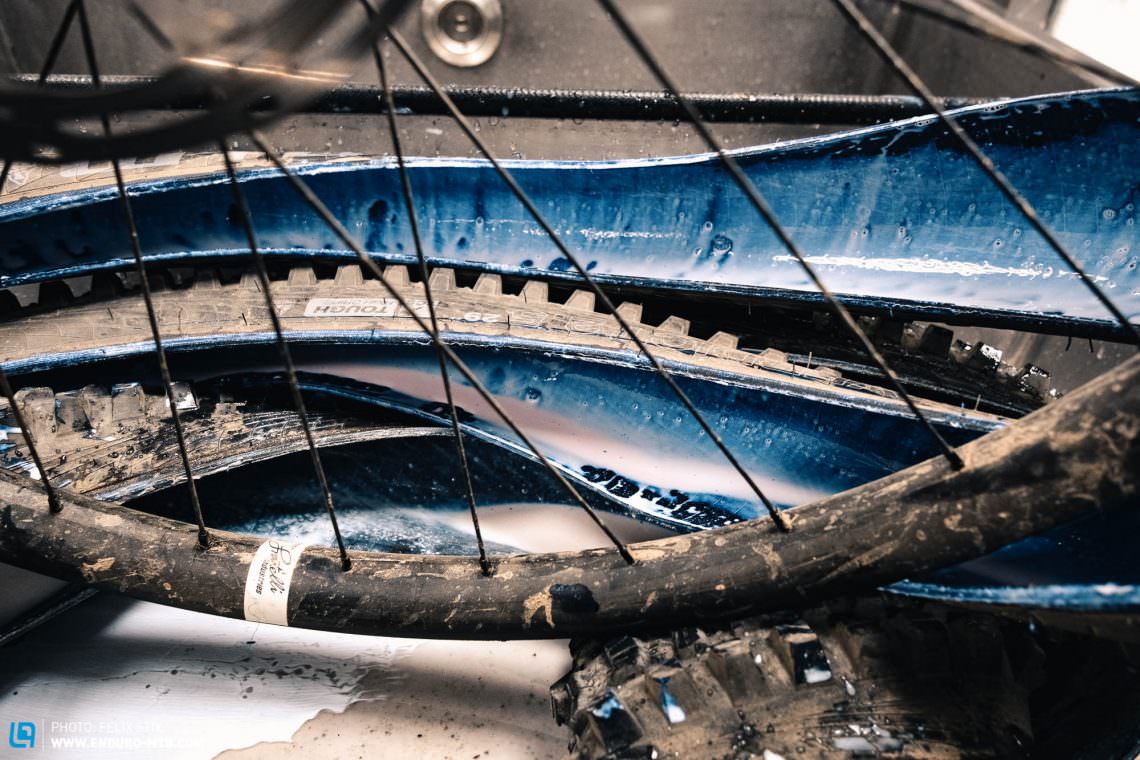
It’s all about tire pressure
The right tire pressure is essential: too much and you can say goodbye to comfort and grip. Too little and the handling becomes imprecise and spongy and you’re much more likely to puncture. That said, the right pressure is dependent on personal preference as well as countless other variables. Nevertheless, we have some guidelines on how to find the perfect tire pressure for you and your style of riding. If you’re just looking for a starting point that works well in most cases, then we recommend 1.8 bar (26 psi) for tires from 2.35″ to 2.5″ wide, front and back.
Tire pressures above 2.5 bar lead to a serious loss of grip!
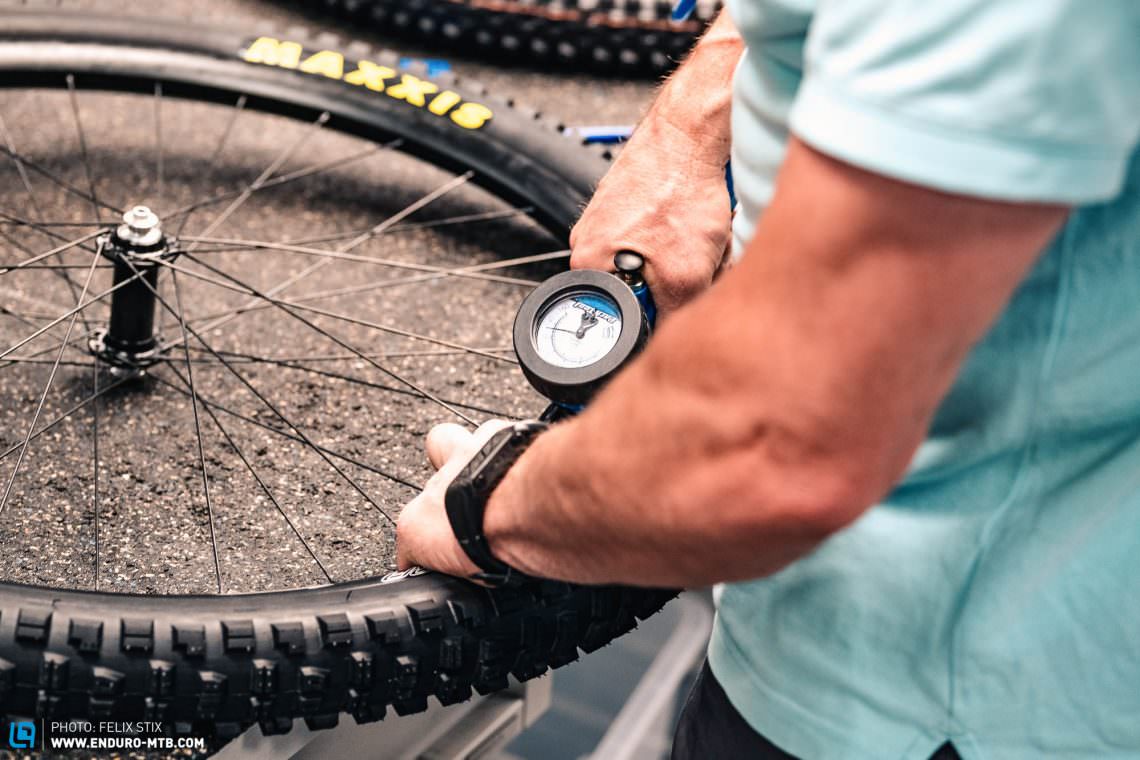
Tire width ≠ tire width
How wide is too wide and how narrow is too narrow? A wider tire has a larger footprint and can thus generate more grip. The increased volume can also lead to increased puncture protection and comfort. However, with tires that are wider than 2.6″, aggressive riders will have to fight with some of the negative side effects in the corners. The handling becomes spongy and inaccurate so that holding a precise line becomes difficult. In berms, wider tires can collapse more easily with a much more pronounced effect on handling. Both the rim and the tire profile have a big effect on the actual width of the tire. Different rim widths will be more suited to particular size ranges of tires and the final tire size can be influenced by fitting it to a narrow or wide rim. The actual tire width is always measured at the widest point: at the edges of the shoulder knobs.
Weight
Don’t underestimate the weight of your tires. A set on its own will add about 2 kg to your bike. Even though they aren’t much heavier than a full water bladder, the weight of the tires has a noticeable effect on the handling since the tires are part of the wheels’ rotating mass, which you have to accelerate and decelerate when you pedal and brake. Although tires have a damping effect that reacts to bumps a lot quicker than your fork can, they also form a part of the “unsprung” mass of your bike and thus have a massive impact on your suspension. However, a heavy tire can also have a positive influence on handling. When things get rough, heavy tires will help you hold your line through a rock garden or over roots as lateral impacts don’t upset them as easily. However, there’s a very fine line between too heavy and too light, though on the whole we prefer to have a bit more weight on the tires to save our rims and spare tubes.
Tough, thick casings are heavy, so many bike brands resort to speccing fragile tires on their builds to reduce the weight of the bike. What a pity!
Front tires ≠ rear tires
The requirements for the front tire differ from those of the rear tire. On an Enduro bike, you want to generate as much traction as possible at the front, while the rear will be a compromise between grip and rolling resistance. When it comes to puncture protection, there are massive differences as well. The forces on the rear wheel are usually higher and when we consider all the punctures we have had, the majority have been at the rear – it may be worth fitting a more durable tire.

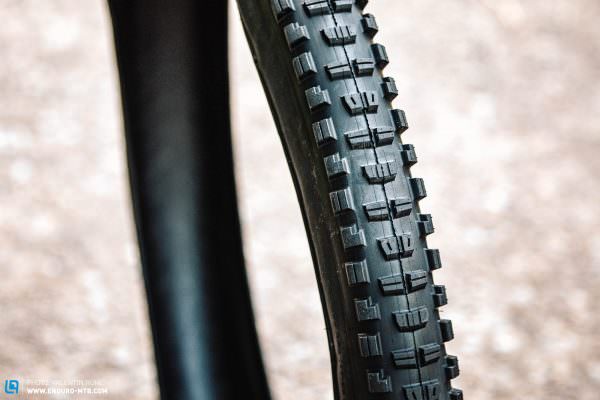
Yes, tires are expensive!
Even if you don’t fit new tires every day as the pros do, replacements do make quite a dent in your holiday fund. The fact is that a high-quality tire is relatively expensive but also has a massive impact on your bike’s trail performance. A tire isn’t just a consumable part – instead consider it as something that allows you to tune your bike and its handling. Instead of carbon spacers, it pays much more to invest in a high-quality tire.
What are the benefits of tire inserts?
Tire inserts have become a dime a dozen and the price range of these systems is huge. The operating principle is generally the same: a foam insert acts as a cushion between the rim flange and the tire during heavy impacts. As a result, the tire no longer slams into the rim and doesn’t get damaged as easily. Other problems such as burping can only be prevented by very few systems. We’ve already reviewed many of the popular tire inserts on the market, testing them out on the trails and in the lab. However, overall we usually prefer simply fitting a tire with a thicker casing. Why? The weight difference between the tire insert and a thicker casing is often only marginal. On top of that, the tires are much more robust, don’t puncture as easily and offer better cornering stability.

The area of application isn’t set in stone
Even if a tire was specially designed for the front or rear wheel, you don’t necessarily have to stick to these instructions. A Minion DHRII (Downhill Rear II) also works well on the front and offers a slightly narrower alternative to the bulky Minion DHF. Even Michelin’s Wild Enduro front tire can offer more traction on the rear wheel in muddy conditions than their “intended” rear tire.
You’re also free to use the tires in whatever conditions you prefer. A mud tire often performs excellently in summer when the trails are covered in a thick layer of dust. Tire manufacturers give you a rough guideline on what the tire is good for, but this isn’t carved in stone: you decide!
Who says that a mud tire can’t work in deep dust?
How did we review so many tires?
Good things take time: no other group test at ENDURO has taken us as long and involved as many test riders as this one. All of our editors got involved. Over the last two years, we’ve reviewed about 200 bikes. That makes 400 tires on which we rode countless kilometres of trails. This has allowed us to draw on a wealth of experience in the assessment of tires. We evaluate the characteristics of the most common models in all their variations with every ride on our test bikes.
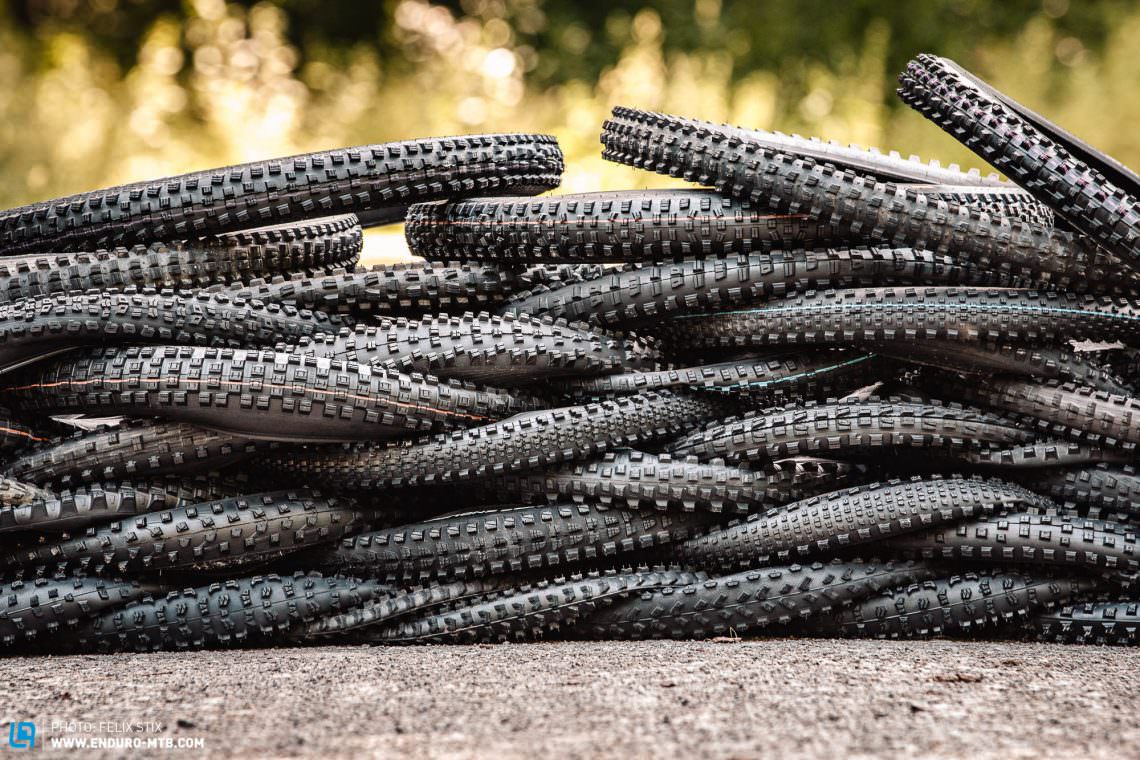
Experience, assessments and test rides are one thing, but what really matters is how the tires compare directly to each other. During our back-to-back sessions in various bike parks, our tubeless pump ran at full tilt as we swapped tires. We focussed on certain criteria and only compared selected tire combinations – there is no point comparing a mud tire and semi-slick tire when you’re looking for the perfect all-rounder. What really matters is the difference between two tires with the same purpose: on which tires do the shoulder knobs fold too easily, which offer better self-cleaning and which don’t let you down when you get on the brakes?
By far the most common cause of punctures in tubeless tires are pinch flats. Again, we fell back on the testing experience of all our editors. But since no two punctures are alike, we also tested the tires’ pinch-flat resistance in Schwalbe’s tire testing laboratory – set up tubeless, obviously!
The trail isn’t a lab. Riding conditions can’t be reproduced accurately with any machine.
Part II – The four most important factors in tire selection
Whether you’re planning an Alpine crossing, want to race downhill next weekend, or you’re planning a week-long bike holiday with your buddies, if you’re looking for new tires, there are four basic things to consider when looking for the “perfect” tire.
Dimensions
Kids’ bike or wagon wheels? You obviously need the right diameter tire for your wheels, but here we’re talking about finding the right tire width. It should suit your rim and your riding style. A wide, high-volume tire offers more “suspension” and increases comfort. Traction and pinch-flat resistance also improves with increasing tire volume (using the same tire in different widths). However, as the width increases, the precision of the tire is reduced, and if it’s not supported by a matching (wide) rim, the tire will squirm a lot in the corners. With rims of around 30 mm internal width, you can run most tires between 2.4″ to 2.6″ wide. If your rim is narrower than 25 mm internally, the maximum suitable tire width is 2.4″. MAXXIS tires come in either standard or Wide Trail (WT) widths. The tread profile of WT tires is optimised for 35 mm wide rims, but we found that they also worked well on 30 mm rims. Anything narrower than that and we wouldn’t recommend a WT tire.
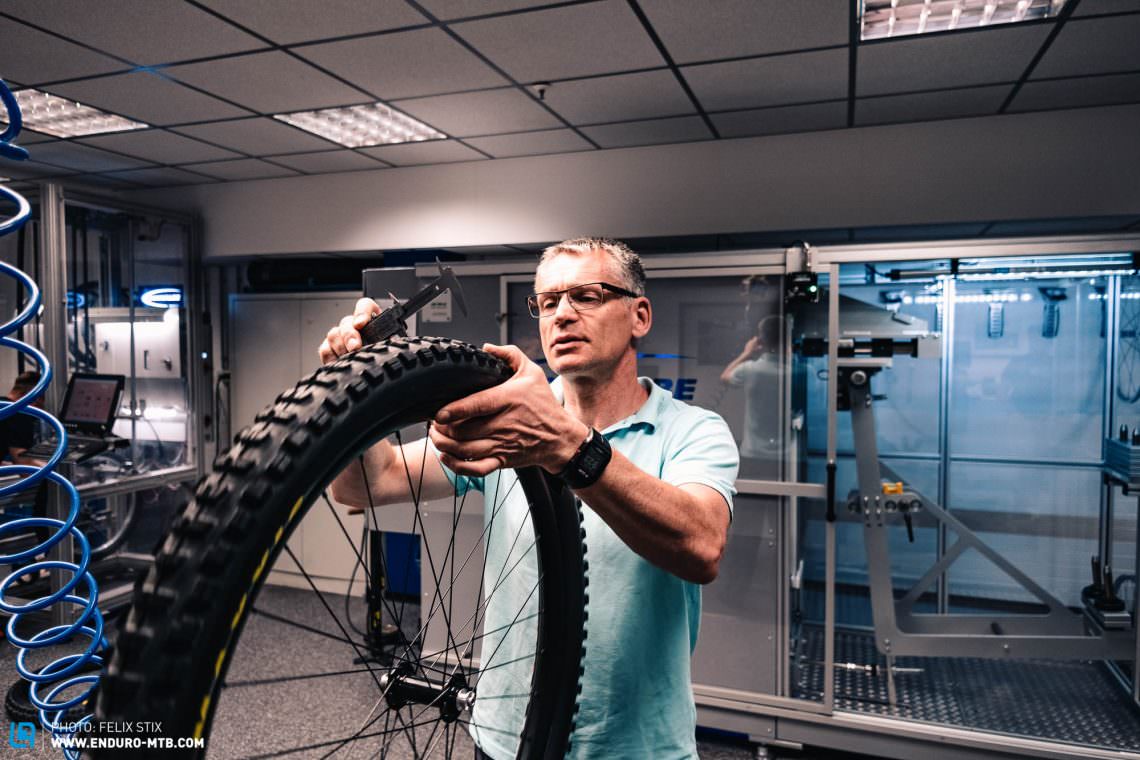
Casing
The casing is the backbone of your tire. It gives the tire its shape and structure and significantly influences cornering stability, puncture protection and weight. First and foremost, you shouldn’t choose the casing based on its weight, but rather on your weight, riding style and trail conditions. The sturdier the casing, the lower you can have your tire pressure without running the risk of getting a pinch flat on every rock and root, or the tire folding in the corners. If in doubt, you’ll do better resorting to the sturdier casing so you don’t risk destroying your new tire on the first ride.
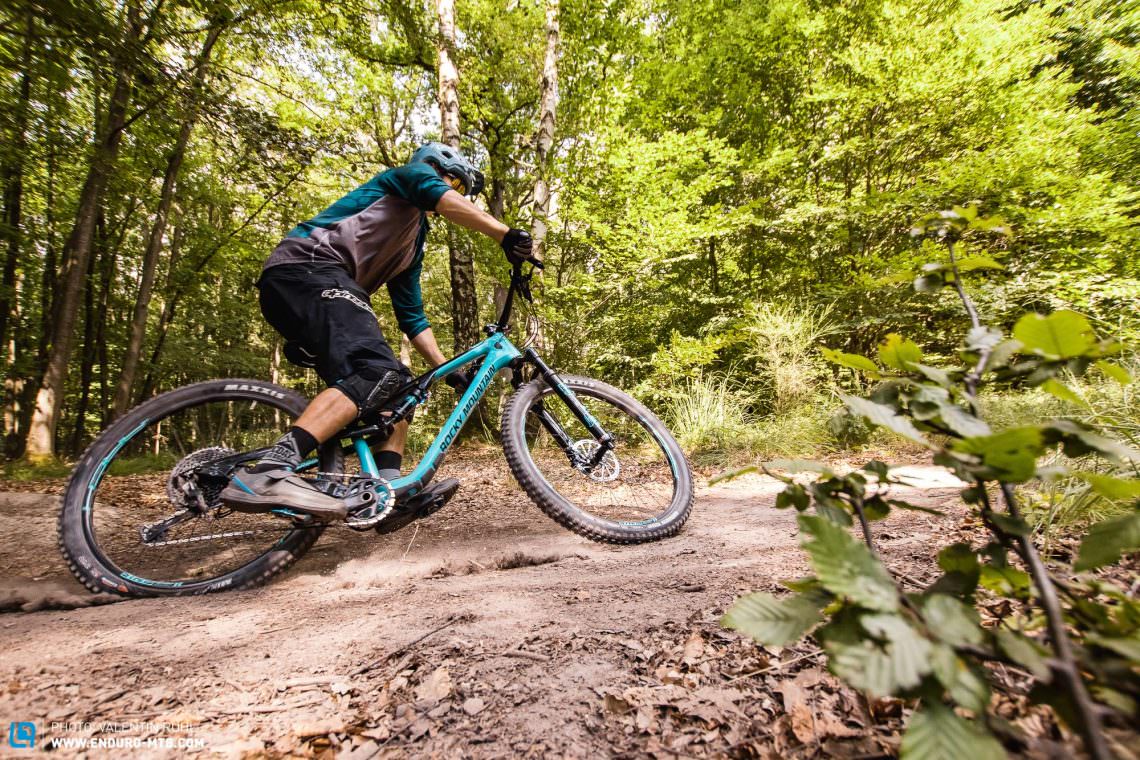
Rubber compound
Tire manufacturers guard the secrets of their rubber compounds like McDonald’s guards the recipe for their BigMac sauce. They have good reason for doing so: while almost all rubber compounds can generate enough grip in dry conditions, there are huge performance differences as soon as the trails are wet. Tire manufacturers are in a constant struggle to find the perfect compromise between grip, rolling resistance and durability. To achieve this, most of them no longer rely on a single rubber compound, combining up to three different mixtures with different properties instead. For example, a triple-compound tire i.e. a tire made of three different compounds, uses the hardest compound as a base to give the tire its stability. The softest compound, offering increased grip but much less durability is used for the shoulder knobs. They only contact the ground when you corner, offering much more traction as you lean the bike over into a turn. The centre knobs use an “intermediate” compound to reduce rolling resistance and increase the longevity of the tire. As if this wasn’t already complex enough, manufacturers also offer different combinations of triple compound constructions. WTB, for example, keeps things simple and designates their tires either High Grip or Fast Rolling. On an Enduro bike, we like to use a soft version with a lot of grip up front and a harder triple compound at the rear for less rolling resistance. Tires with only one or two rubber compounds are usually a bit more affordable, making them a particularly good alternative for the rear if you want to go a little easier on your wallet.
Profile
The tread pattern is the distinguishing feature of every tire and has an enormous influence on handling. The tread has three sections: the centre knobs, which influence rolling resistance and braking traction; the shoulder knobs, which provide the necessary cornering traction, and the transition knobs in between the centre and shoulder knobs. They provide the transition between centre and shoulder knobs and offer traction as you lean your bike fully onto the tire’s shoulder. There are countless tread variations in terms of the spacing, shape and size of the knobs. When choosing the right tread, you should pay particular attention to the conditions on your trails. In soft, moist soils you should go for an “open” pattern with large knobs and big gaps between them. This ensures that the tread doesn’t get clogged up with mud and the knobs can dig deep into the soft ground. If you’re looking for a tire that rolls fast and doesn’t squirm on hard rock slabs or berms, you will need a more “closed” pattern.
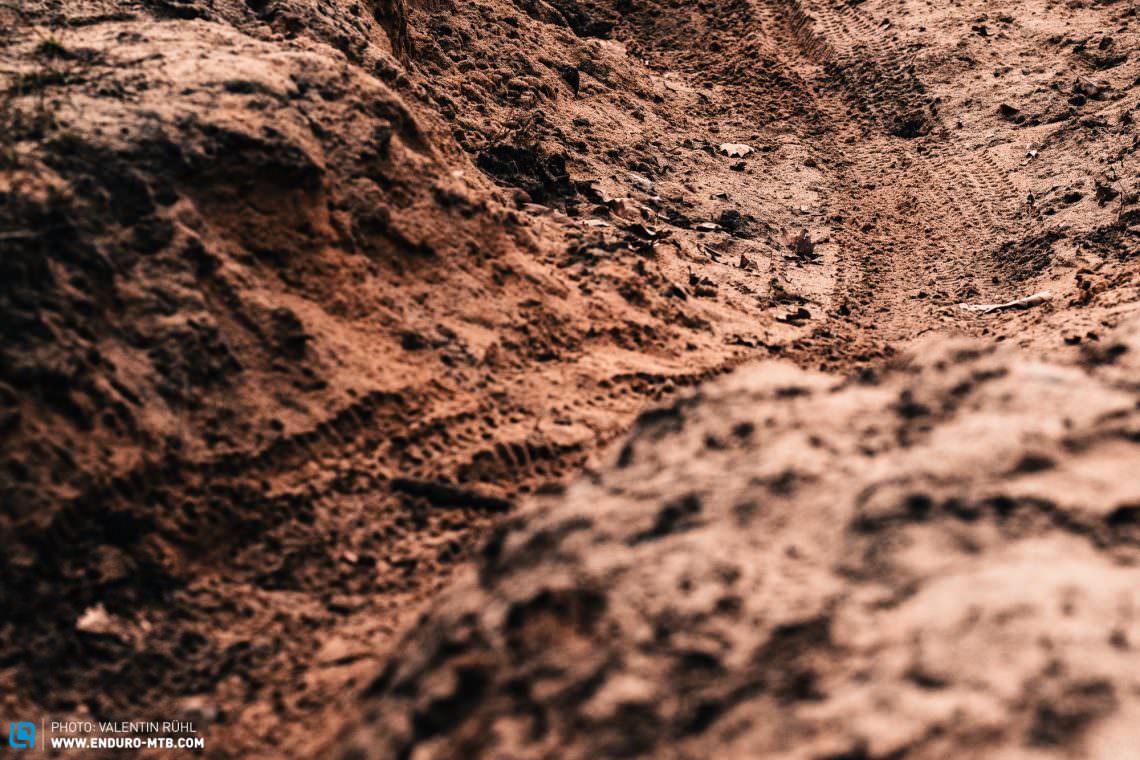
Part III – How to choose the right tire
The best starting point for finding the right tire, or the right combination for the front and rear wheels, is your current setup. Now it’s your turn to do some troubleshooting: analyse how the tires behave on the trail, where they perform well and where they don’t, and consider when you last punctured. Here are some tips on how to get rid of your tire problems:
Pinch flats
Pinch flats are just like the snakebites you used to get with tubes in your tires. A hard landing or impact results in the tire getting pinched between a rock (or any other trail obstacle) and the rim puncturing the tire in two places – by the rim and between the centre and shoulder knobs. If you regularly suffer pinch flats despite running a high tire pressure, the casing is too thin for your weight, your riding style and your trails. An interim solution is to increase the tire pressure even more. However, in the long run, you should resort to a thicker casing (like Schwalbe’s Super Gravity instead of Snakeskin). If you only occasionally have pinch flats on the rear wheel and you’re otherwise satisfied with your tires and they’re still new, a tire insert might make sense.
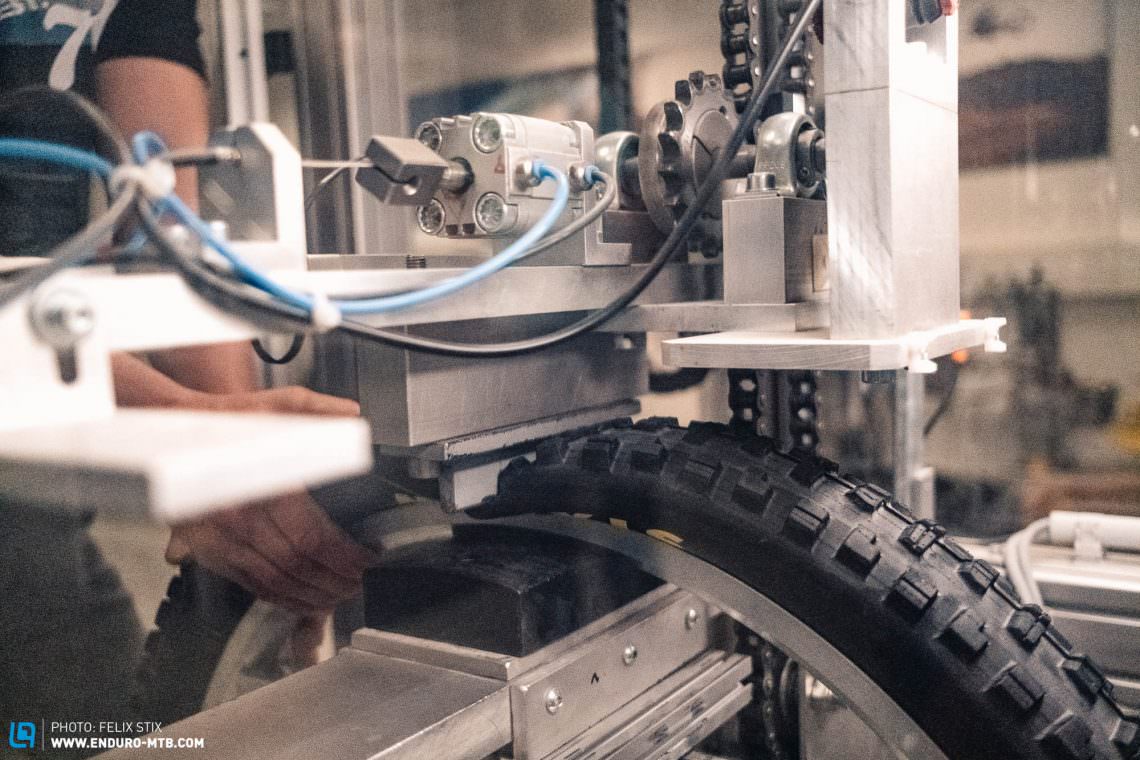
I’m too slow on the straights
Want to roll faster on the descents? Or have an advantage over your riding buddies on the climbs? If the rolling resistance of your tires is too high for your liking, it’s either due to the tread or the rubber compound. Regarding rubber compound, the solution is simple: a hard compound rolls faster. Since you almost only use the centre tread on even terrain you can confidently choose a triple compound tire with a hard centre compound and a soft compound for the shoulder knobs. That way you can roll faster and still benefit from the increased grip of the soft compound in the corners. When it comes to the tread pattern, a semi-slick tire with tiny centre knobs on the rear wheel will roll a lot faster. The resulting compromise in traction is usually only worth it on very hard packed ground. Tires with larger knobs can also roll well if the tread is very tightly spaced. A good example of this is the MAXXIS Aggressor.
Burping
In grippy corners and berms, the enormous lateral forces that act on the tire can unseat the tire bead from the rim, opening up a small gap between the rim and tire and resulting in a loud “burp” as air escapes. Besides losing pressure, other tell-tale signs of burping include the residue of tubeless sealant on the sidewall of your tire and your rims. Burping is especially likely to occur on tracks with a lot of berms. You can simply put a little more air in your tires for these trails, but if it continues to be a problem, or if you’ve managed to literally pull your tire off the rim, you need a thicker casing. If the problem persists, the burping could also be due to an inappropriate rim and tire combination. If you’ve got a wide tire on a very narrow rim, the tire won’t have enough support.
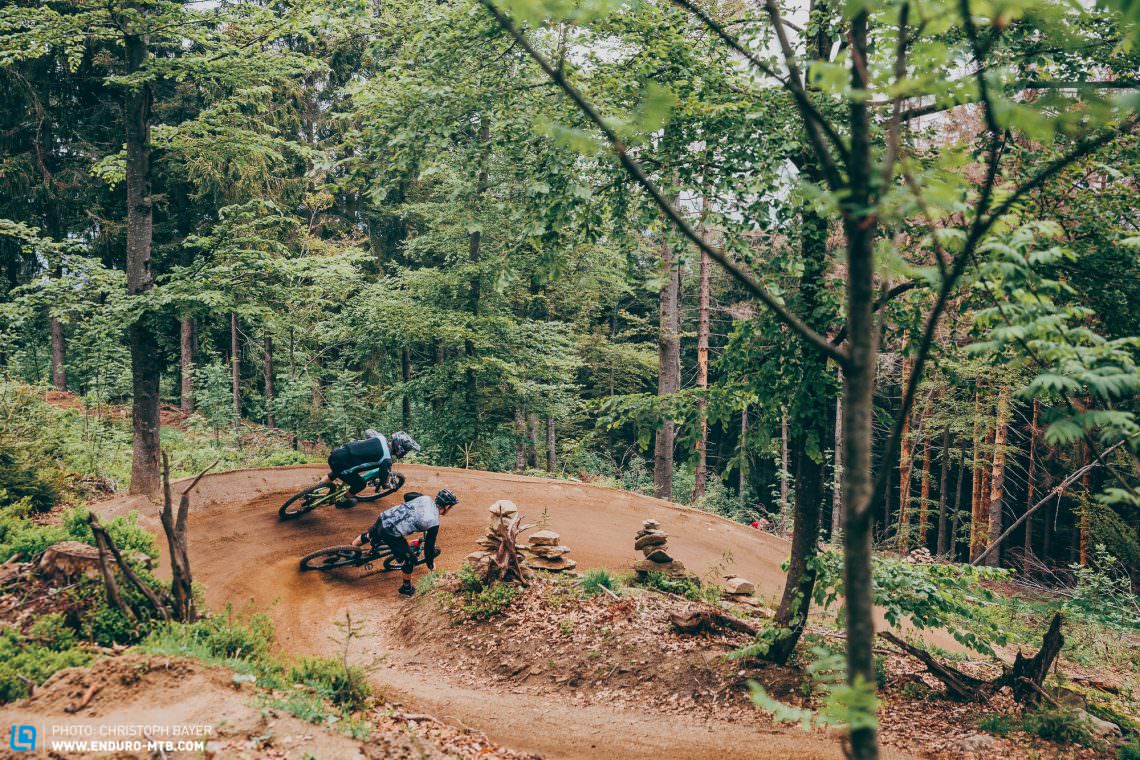
A lot of grip in dry conditions but no grip in the wet
As soon as it starts raining the demands on your tires change very quickly. Obviously, you can’t expect the same level of performance on wet roots and rocks as in dry conditions, but you don’t have to resign yourself to a complete loss of grip. Check your tire when you’re riding in wet conditions to see if it gets clogged up with mud. If the tread doesn’t clean itself effectively, you’ll barely be able to distinguish the tread pattern within all the mud. A more open pattern with large gaps between knobs could make sense in this case. Good examples of this include Schwalbe’s Magic Mary, the WTB Verdict Wet or MAXXIS’ Shorty.
When things get wet, you’ll quickly be able to tell the good rubber compounds from the bad. Only the softest rubber compounds manage to find purchase on wet roots. Try a soft rubber compound up front and a medium compound on the rear wheel in the wet winter months. That way you run less risk of the front wheel sliding out and you can still keep up with your buddies on the climbs.
Cut sidewall
The sidewalls of your tires can get cut relatively easily, especially if your trails are very rocky. One of the most common causes of this is if your rim is too wide or your tire is too narrow. If the sidewalls of your tires stick out wider than the shoulder knobs, the sidewalls are much more exposed and susceptible to cuts from rocks lying at an angle to the trail and any other sharp objects. The solution: mount a wider tire. The tire casing also determines how easily its sidewalls can get cut. A higher TPI (threads per inch) casing can imply more protection against cuts, though this rule of thumb doesn’t apply with super expensive Cross Country racing tires that have more than 120 TPI. Some tires also have a cut-resistant layer integrated into the carcass, such as the EXO casing used by MAXXIS.
There isn’t a single tire to suit everyone, but everyone can find a tire suitable for them.
Editors choice: which tires do we run?
Trev Worsey, 78 kg, Scotland: 15° and a drizzle: a beautiful Scottish day in August. For me to stay in control on our steep and wet trails, I run a mud tire on the front. The knobs on the MAXXIS Shorty aren’t quite as aggressive as some and still roll reasonably well on the climbs. We don’t have shuttles, so I put a High Roller II on the rear wheel, which offers good self-cleaning abilities and also rolls fast enough.
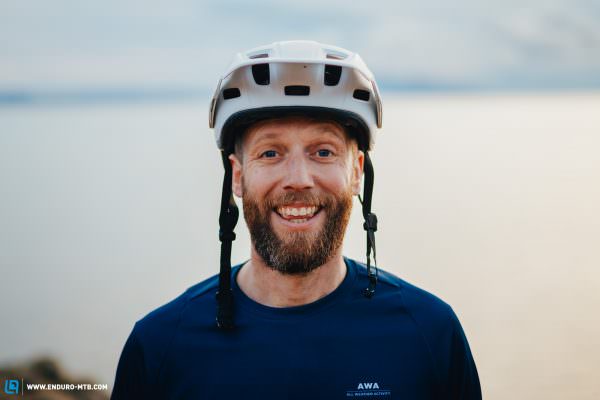
Finlay Anderson, 74 kg, Scotland: With my weight, I don’t have to worry too much about punctures and like to save a few grams with a lighter casing. The wide WTB Vigilante with its soft rubber compound literally clings to the ground in off-camber sections. However, on hard packed berms, the shoulder knobs fold easily. Might as well: braaap

Valentin Rühl, 85 kg, Stuttgart: I’m not too concerned about lap times. Having fun, getting into the flow and catching air is my thing. I love the Schwalbe Hans Dampf. It’s really nice while drifting and always remains predictable. I absolutely have to have the Super Gravity casing on the rear for enhanced durability. For the winter, I like to put a Magic Mary tire up front.

Christoph Bayer, 87 kg, Alpine Office: For years my favourite tire front and back was the 2.4″ MAXXIS Minion DHRII. Michelin’s super grippy Enduro combination is slowly taking its place though. The front tire provides tons of grip, yet the back lets you drift into a corner when you feel like it. Super fast and pure fun!
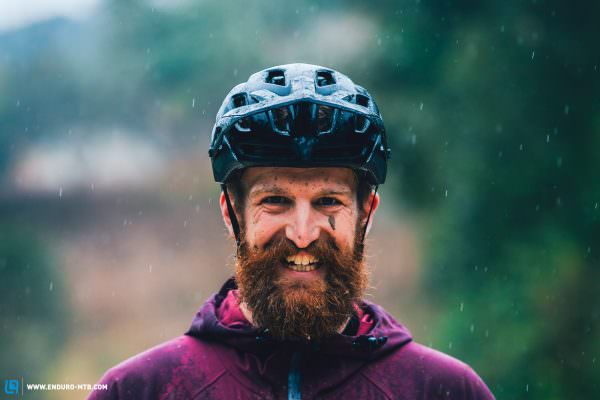
Felix Stix, 92 kg, Stuttgart: Hold on and charge through – my riding style is anything but clean. Thin-walled tires have an average life expectancy of 5 minutes on the trail, so I resort to the most durable Enduro version for the casing. I’m loving the Super Gravity casing of the Magic Mary. Unfortunately, I always have to resort to downhill casings in wet conditions because there is no 29er model with the extra soft rubber compound.
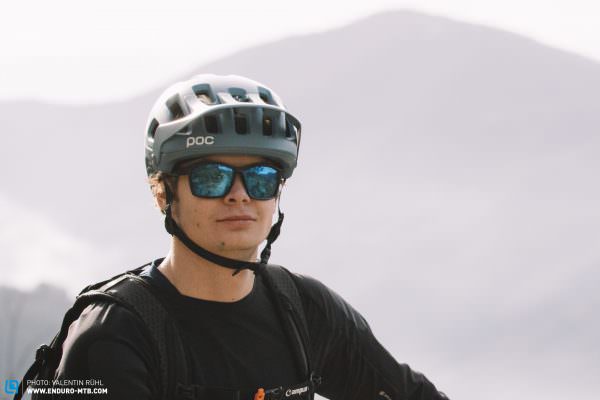
All the models in test
If you’ve gotten this far: congratulations! Now you’re an expert on tires. Over the following pages, we’ll give you an overview of the different tires in our big group test. We tested every profile, rubber compound and casing to let you find the best option to suit your needs.


